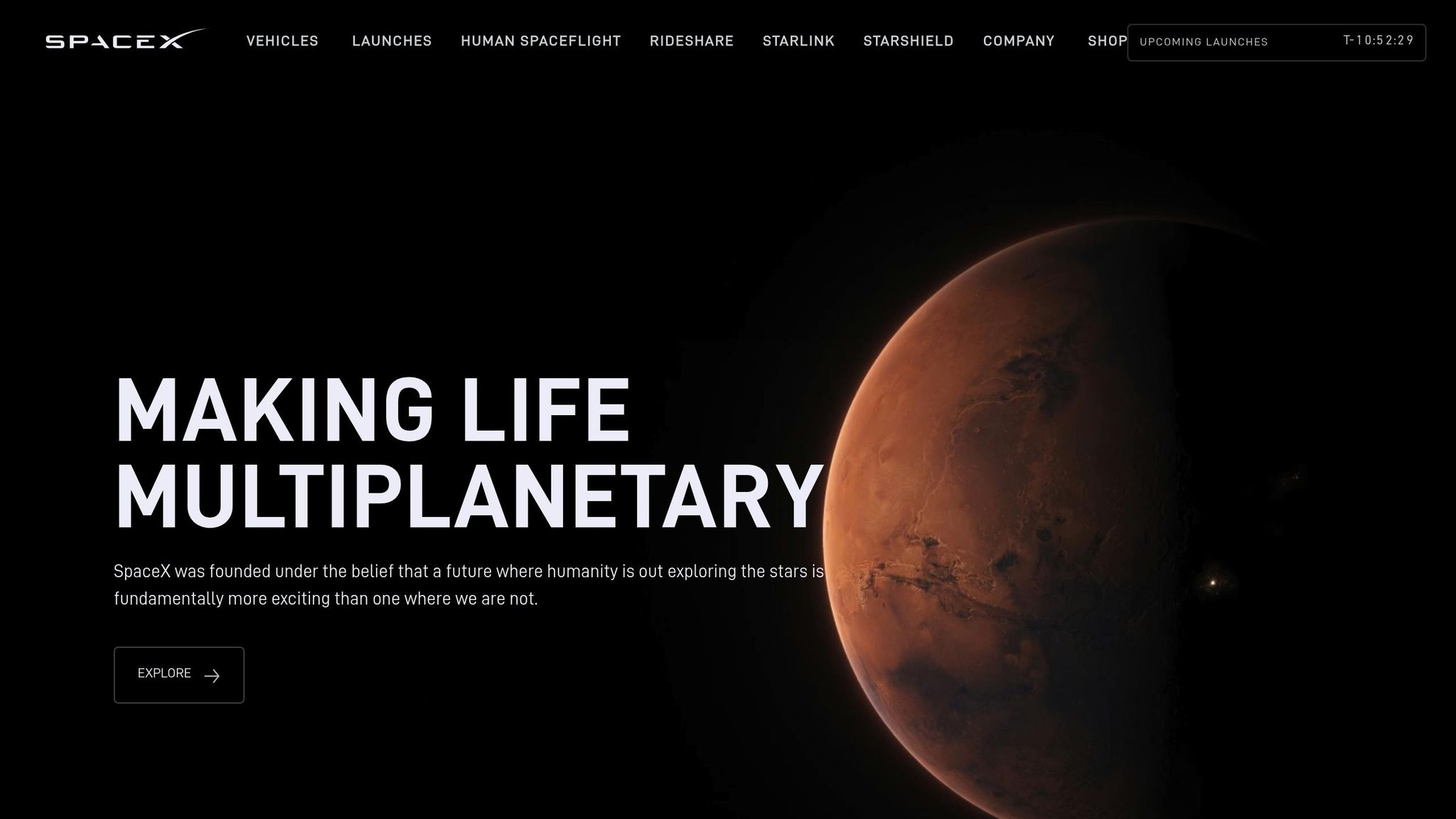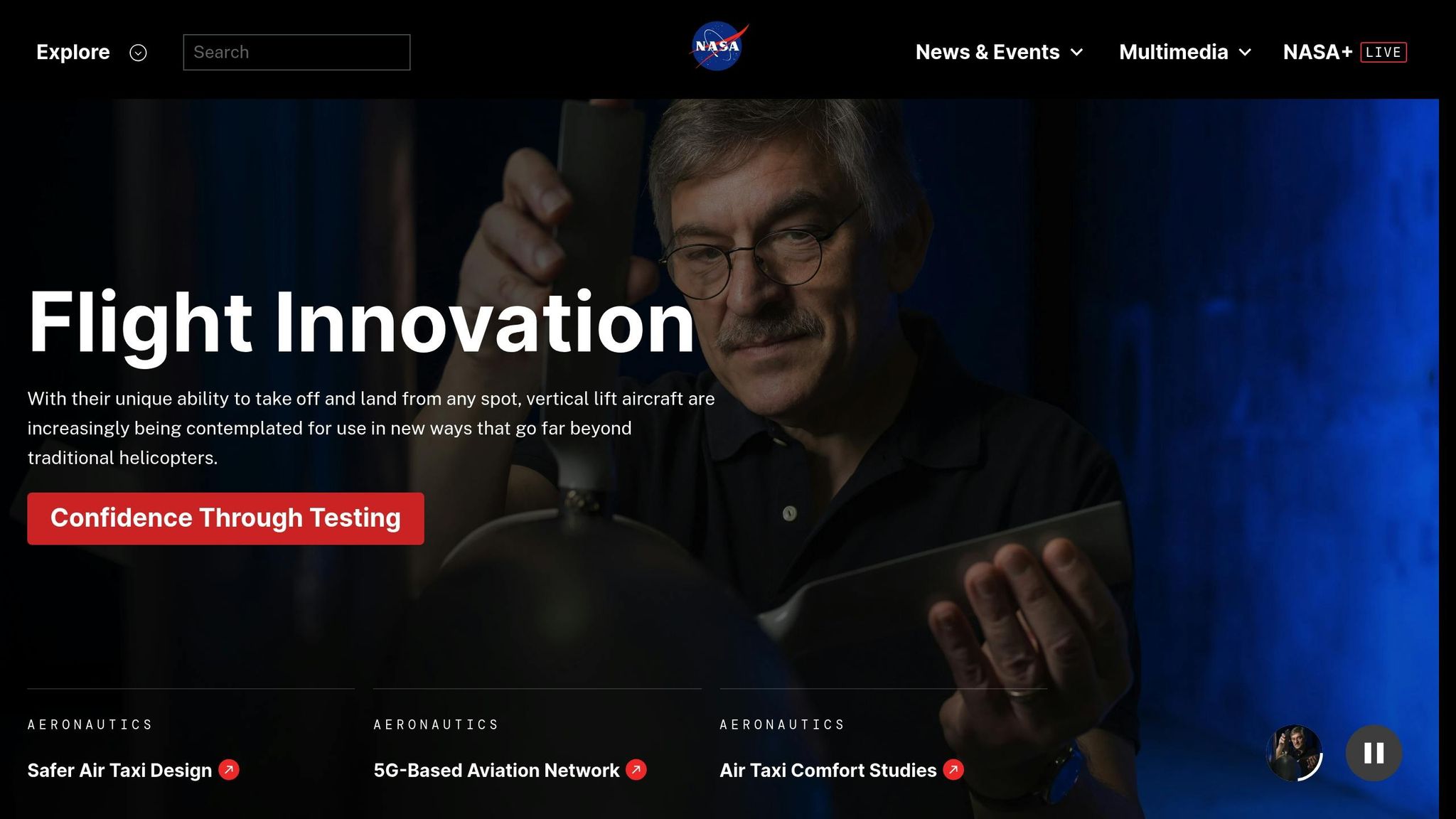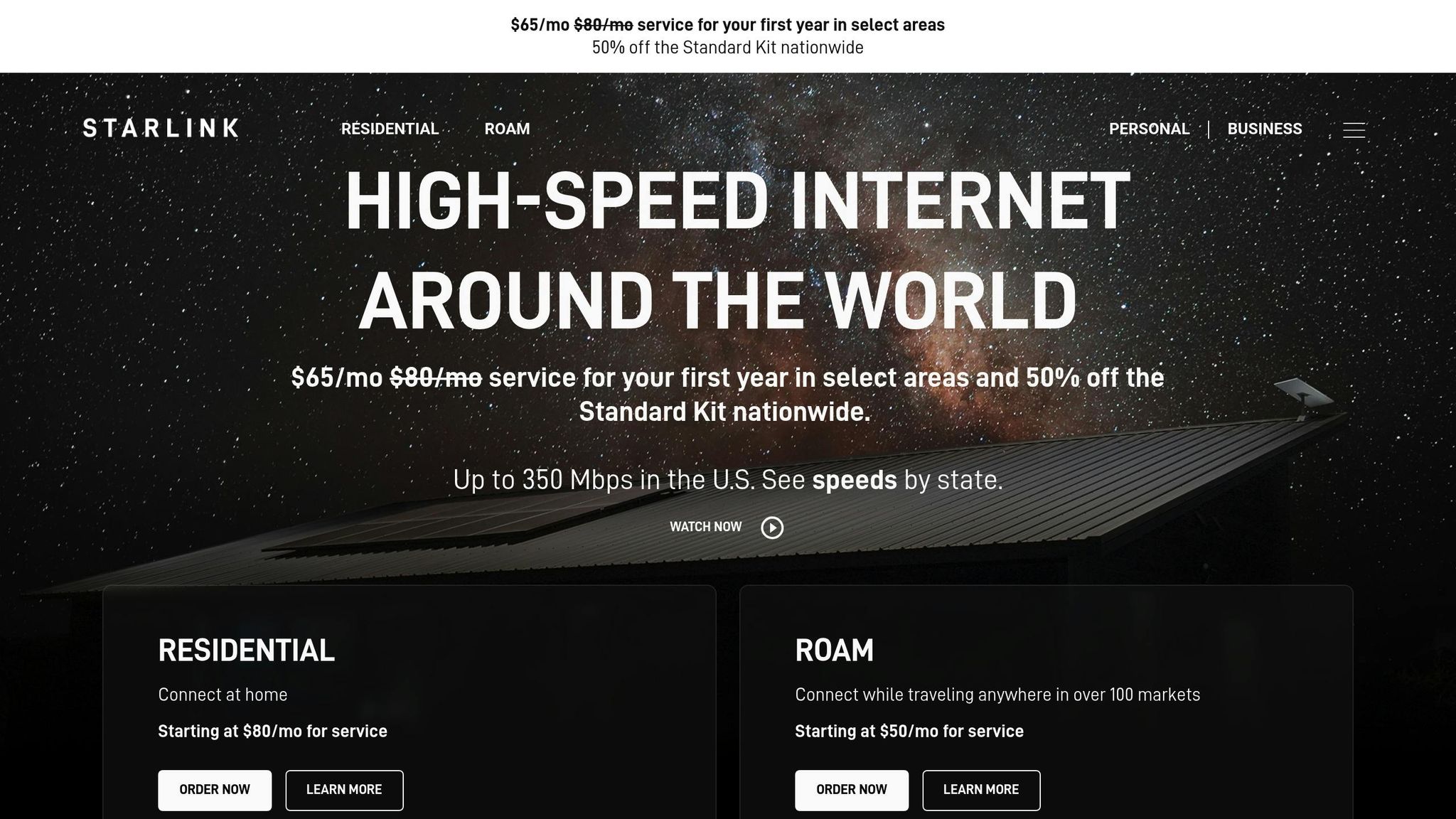SpaceX R&D Contracts: What Investors Should Know
Explore how R&D contracts shape financial stability and innovation in the aerospace industry, highlighting risks and opportunities for investors.

SpaceX's R&D contracts are key to its growth, offering funding for advanced technologies like reusable rockets and satellite systems. These agreements help SpaceX reduce costs, access specialized resources, and build strong relationships with government and commercial clients. However, they come with risks like delays, cost overruns, and reliance on government budgets.
Key Takeaways:
- Funding Benefits: Contracts provide non-dilutive funding, preserving SpaceX's financial structure.
- Tech Advancements: Innovations in reusable rockets and Starlink boost efficiency and profitability.
- Risks: Delays, budget shifts, and technical challenges can impact revenue and timelines.
For investors, analyzing these contracts is crucial to understanding SpaceX's financial health and pre-IPO valuation.
Where Does SpaceX Actually Get Their Funding From?

How R&D Contracts Create Value
SpaceX's research and development (R&D) contracts play a crucial role in securing funding, driving technological advancements, and maintaining a competitive edge in the space industry.
Types of R&D Contracts
SpaceX takes on a variety of R&D contracts, each designed to achieve specific strategic goals:
- Upstream Development Contracts: These involve comprehensive, long-term projects that take a technology from its initial concept all the way to operational readiness. A prime example is NASA's Human Landing System contract, which tasks SpaceX with developing groundbreaking capabilities over multiple years.
- Prototyping Contracts: These are shorter-term agreements, typically lasting one to two years, aimed at testing and validating specific technologies or concepts. For instance, under the U.S. Space Force's Launch Service Development program, SpaceX worked on advancing its launch capabilities.
- Mission Services Contracts: These contracts combine operational launches with technology milestones. NASA's Commercial Crew initiative is a notable example, where SpaceX not only provided crew transportation services but also developed new safety systems and crew interfaces. This dual-purpose approach ties directly to measurable benefits for investors.
Value Creation for Investors
SpaceX's R&D contracts generate clear value for investors in several ways:
- Non-Dilutive Funding: These contracts provide funding without requiring SpaceX to take on additional debt or issue new equity. This allows the company to develop advanced technologies while preserving its financial structure.
- Cross-Portfolio Innovations: Technologies developed under specific R&D projects often find applications across other areas of SpaceX’s operations. For example, advancements in engine technology or precision landing systems can enhance efficiency and profitability across a wide range of missions.
Key Areas for Investor Attention
There are several areas where SpaceX's R&D efforts align with promising growth opportunities:
- Reusable Launch Systems: By focusing on reusability, SpaceX continues to lower costs and strengthen its position in the commercial space market.
- Lunar Operations: Technologies supporting lunar missions, such as in-space refueling, long-duration life support, and precision landing, could open doors to new commercial opportunities in lunar exploration and services.
- National Security Contracts: These contracts not only provide stable revenue but also reinforce SpaceX's capabilities in areas like responsive launches and space domain awareness, catering to both government and commercial needs.
Key R&D Programs to Monitor
SpaceX's progress and appeal to investors are heavily influenced by three major R&D programs.
NASA Human Landing System

The Human Landing System (HLS) program is central to SpaceX's work in lunar exploration. Under NASA's contract, SpaceX is developing the Starship for lunar landings, which strengthens its position in deep space missions and its long-term goal of Mars colonization.
National Security Space Launch Phase 3
The National Security Space Launch (NSSL) Phase 3 program highlights SpaceX's contributions to national defense. By refining reusable launch technology and securing government contracts, SpaceX not only ensures steady revenue but also solidifies its reputation as a dependable partner in national security.
Starlink Technology Evolution

Starlink's advancements are reshaping satellite technology. With a valuation of $350 billion as of December 2024, its innovations include direct-to-cell technology for smartphone connectivity. Recent R&D efforts - focusing on satellite miniaturization, power efficiency, and inter-satellite links - are driving down production costs while boosting capacity. For investors, these improvements promise scalable revenue streams and better operational efficiency.
Next, we’ll dive into the quality of these contracts and the risks that could influence SpaceX’s valuation ahead of its potential IPO.
Evaluating Contract Quality and Risk
Understanding the details of SpaceX's R&D contracts is key to assessing its financial health and growth potential. The structure of these contracts and the timing of payments can have a direct impact on cash flow and operational planning.
Funding Structure and Payment Timing
The way SpaceX gets paid under its contracts plays a big role in how predictable its cash flow is. Government contracts, for instance, often release payments based on milestones - specific deliverables that need to be completed before funds are disbursed. While this approach can ensure a steady income stream over time, it requires SpaceX to spend money upfront, which can strain resources until payments are received.
Contracts typically fall into two categories: fixed-price or cost-plus. Fixed-price contracts set a predetermined payment amount, regardless of how much it actually costs to complete the work. If SpaceX can operate efficiently, this model could lead to higher profits. On the other hand, cost-plus contracts reimburse approved expenses and include a management fee, offering more predictable cash flow but generally lower profit margins. They also come with added administrative work.
The timing of milestone payments is another factor to watch. Gaps between milestones can create cash flow challenges, making it essential for investors to keep an eye on how these intervals align with SpaceX's operational needs. Beyond payment structures, the risks tied to schedules and performance also play a critical role.
Schedule and Performance Risks
Delays caused by technical hurdles or regulatory approvals can push back milestones, delaying revenue recognition. One way to evaluate these risks is by looking at the maturity of the technology involved. For example, systems with higher Technology Readiness Levels (TRL) - a measure of how close a technology is to being fully operational - are less risky than early-stage systems still in development.
Another challenge arises from project interdependencies. If one project faces delays, it can create a domino effect, holding up related initiatives. In such cases, penalties for missed deadlines or milestones could further reduce the expected financial returns.
Concentration and Budget Risks
SpaceX's reliance on government contracts introduces another layer of risk. Federal spending priorities can shift due to political changes or budget constraints, potentially leading to contract modifications, reduced funding, or even cancellations. These changes could significantly affect revenue expectations.
Geopolitical tensions and international competition also play a role in shaping government funding decisions. Events like budget sequestration or government shutdowns can delay contract awards and payments, disrupting cash flow. While diversifying contracts across multiple agencies and types can help reduce some of these risks, a major reduction in government spending would still have a considerable impact on SpaceX's financial outlook.
Impact on Pre-IPO Valuation
SpaceX's focus on strategic R&D efforts, as outlined earlier, plays a key role in shaping its valuation as it inches closer to a potential public offering. These efforts, coupled with high-profile contracts, lay the groundwork for sustained growth.
Revenue Visibility and Stability
Securing long-term R&D contracts, like those with NASA, provides SpaceX with a level of revenue predictability that’s rare among private companies. These agreements ensure a steady stream of income, helping to reduce uncertainties tied to valuation. Even during fluctuating market conditions, such contracts act as a stabilizing force, creating a foundation for continuous technological progress and, potentially, greater profitability.
Technological Edge and Profit Margins
SpaceX’s investments in reusable rocket systems and satellite technology are not just about innovation - they’re also about efficiency. These advancements lower operational costs while keeping pricing competitive, which can lead to healthier profit margins. The Starlink satellite network, for instance, is a game-changer, opening up new revenue streams with potentially higher margins compared to traditional launch services. For investors, this combination of improved margins and proprietary intellectual property enhances SpaceX’s appeal and strengthens its position across multiple business areas.
Balancing Opportunities and Risks
While breakthrough technologies can open up new markets and drive down costs, they come with their share of challenges. Technical setbacks, delays, or cost overruns can quickly impact valuation estimates. Additionally, regulatory and political factors, such as shifts in government priorities or changes in space policy, could affect the value and continuity of key contracts.
SpaceX presents a unique investment case - one that combines the security of predictable government revenue with the potential for transformative technological advancements. However, it’s not without risks. For those looking to dive deeper into the investment opportunities and challenges tied to SpaceX, more detailed information is available in the SpaceX Stock Investment Guide.
Conclusion
SpaceX's R&D contracts play a pivotal role for pre-IPO investors, shaping the company's funding strategies and driving the technological advancements that fuel its future growth.
Here are some key takeaways for investors:
- Revenue Stability: Multi-year R&D contracts offer a predictable revenue stream.
- Technological Edge: These agreements support the development of cutting-edge innovations, from reusable rockets to advanced satellite systems, strengthening SpaceX's competitive position and boosting profitability.
- Risk and Reward: The structure of these contracts - such as funding mechanisms and milestone schedules - directly impacts both execution risks and potential returns.
However, it's not without challenges. Government contracts can face budget cuts, delays, or changes in policy, while technical hurdles might lead to cost overruns or extended timelines. Investors need to evaluate not just the financial value of these contracts but also their strategic importance and associated risks.
Staying informed is crucial. Monitoring updates on contract developments, funding announcements, and program milestones can provide valuable insights into SpaceX's valuation. Resources like the SpaceX Stock Investment Guide offer ongoing analysis to help investors track these factors and identify opportunities ahead of a possible IPO.
As the space industry expands, SpaceX's R&D efforts solidify its position as a leader in aerospace technology. These contracts offer a lens through which investors can better understand and navigate the company's evolving potential.
FAQs
How do SpaceX's R&D contracts influence its financial health and future growth?
SpaceX's research and development (R&D) contracts are a cornerstone of its financial stability and a key driver of its future ambitions. These agreements provide a consistent revenue stream, allowing the company to push forward with cutting-edge projects and maintain its competitive edge in the space industry. This dependable funding not only fuels SpaceX's bold initiatives but also bolsters investor confidence in its long-term prospects.
By securing these contracts, SpaceX solidifies its status as a dominant force in the private space sector. This leadership has significantly contributed to its impressive valuation, which was estimated at approximately $400 billion as of mid-2025. For investors looking to tap into the rapidly expanding space industry, SpaceX presents an attractive opportunity.
What risks does SpaceX face by relying on government R&D contracts, and how could these impact its valuation?
SpaceX relies heavily on government R&D contracts, but this dependency comes with its share of risks that could influence the company's financial health and market value. Changes in political or regulatory landscapes - like contract cancellations, increased scrutiny, or shifts in government priorities - pose potential challenges. For instance, political disagreements or evolving policies could disrupt funding or stall project timelines.
These uncertainties can create revenue swings, which might shake investor confidence and make it harder to predict the company’s future valuation. While these contracts play a key role in funding, SpaceX will need to broaden its income sources to reduce these risks and ensure steady, long-term growth.
How do SpaceX's R&D contracts enhance its leadership in the aerospace industry?
SpaceX's research and development contracts are a driving force behind its cutting-edge technology, including reusable launch vehicles. These vehicles have revolutionized the industry by significantly reducing launch costs and allowing for more frequent missions. This shift not only makes space exploration more attainable but also gives SpaceX a clear advantage over competitors in the aerospace field.
These contracts also fuel advancements in propulsion systems and satellite technology, paving the way for achievements like Starlink's satellite internet services and ambitious deep-space exploration projects. By consistently pushing technological boundaries, SpaceX not only solidifies its leadership in the industry but also diversifies its revenue streams, cementing its role as a trailblazer in private aerospace ventures.
Comments ()